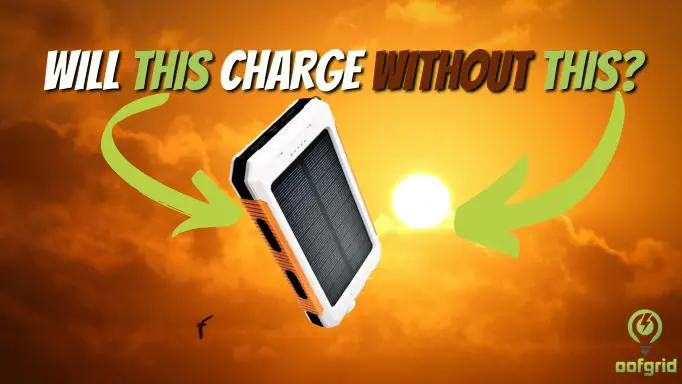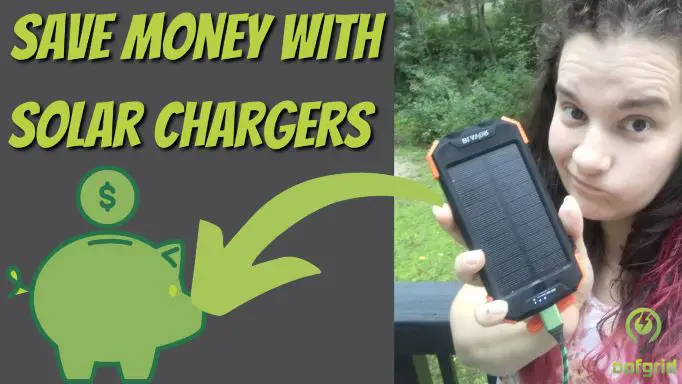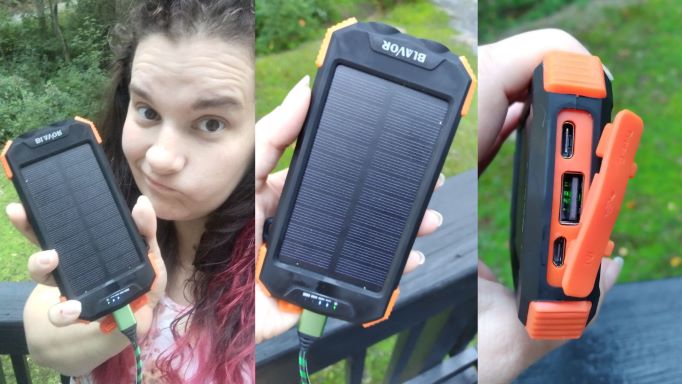The short answer is yes, you can, especially when it is turned off. It is actually a good idea to protect the generator with a waterproof cover if it is not stored in the cargo area of an RV, the corner of your garage, sitting in a shed or encased in a protective shell.
However, covering a portable generator whilst it’s running is another story. Let us see why and what the consequences could be.
Can you cover a portable generator? Whilst covering a portable generator whilst in storage is a good thing it’s not advisable to cover a generator whilst it is in operation. There’s a risk of fire and damage to your generator and a serious health and safety risk. Most generators need ventilation and are not designed to be covered whilst running.
Contents
Should you cover a generator whilst it is running?
The answer to this depends on the type of cover. If the generator is sitting inside of a protective metal housing, the answer is usually yes.
The metal shell is intended to protect it from the elements while allowing it to get adequate airflow. Most portable generators in this category come on trailers that are designed to sit outside.
Can you cover a portable generator while it is running if it is protected by a plastic shell or cover? This again depends on the design. A general waterproof cover that covers the entire generator shouldn’t be in place while the generator is running.
A generator “tent” that covers the top and side of the generator while allowing it to get adequate airflow would allow the generator to run while covered.
What happens if you cover a generator while it is running?
If the generator is covered by a plastic or metal shell that provides adequate airflow, there shouldn’t be a problem unless you’re inside that same space.
For example, you probably don’t want the generator running while inside a tent because it isn’t truly venting the exhaust. However, it is outright dangerous for a person to sit in that same tent while the generator is running.
In fact, you shouldn’t even use a portable generator inside your home. Using a portable generator in even a partially enclosed space like a garage with the door open can cause carbon monoxide poisoning. Nor is turning on fans or opening a window good enough.
Assume the generator is used outdoors or running in an out-building like a detached garage.

What happens if the generator is covered by something that doesn’t give it enough airflow? The generator may startup, but it may quickly die once the motor fails to get enough air.
Suppose the generator can get enough air to start and then continue running for a while. The decreasing level of oxygen and increasing level of particulate debris will interfere in the motor’s function. You won’t just clog up the air filter. You’ll impede proper combustion inside of the generator.
The efficiency will go down while the pollutant output will go up. The generator will certainly work longer and harder while it tries to continue running. This will cause it to get hot. That may cause it to shut down, once temperature sensors recognize the problem and shut it off. Or it could catch fire.
Note that a tent that’s too close to the sides of a hot generator can catch fire, as well, even if the generator is getting enough air to run for hours. Furthermore, a tent or wood casing could be hit by the sparks that could come off the wiring or the moving parts.
When should you cover a generator in some way?
Operating portable generators should be covered when it is raining, snowing, sleeting or there’s other debris in the air. The cover will protect the generator from moisture that might get inside the wiring or motor. The moisture could cause shorts, and it can contribute to rust.
Generators going into storage should be protected, as well. The generator should be stored in a cool, dry place. This will ideally be a shelf that protects it from water spills or minor flooding.
If the generator will be sitting for more than ten days, you’ll need to drain the gas tank and fuel lines. Otherwise, they’ll clog. That will ruin the carburetor. Fuel stabilizer only delays this process, and you don’t want to take the risk of the generator being ruined because it sat too long. Drain it.

Once everything is drained, you can do basic maintenance like cleaning the gas tank and replacing air filters. This is a great time to clean the carburetor. Then you know the generator will be in great shape when you need it. This is true no matter how much the generator cost.
However, after a few years of hard service, you may decide that it’s time to upgrade and replace your tired generator.
You can learn about the best portable generator here in our comprehensive review of the BEST BUDGET GENERATORS.
Suppose you have the generator ready to be put into short or long-term storage. This is a great time to put a plastic or canvas generator cover on the generator if you have one. That protects it from being coated in dust and debris that can clog various parts inside the generator.
Boat covers and other plastic covers designed for other applications are inferior options, since they either don’t cover the entire generator or are a hassle to remove. Fitted generator covers are the best choice when you’re storing your generator for the season.
Click here to see some great options on Amazon for generator storage covers.
Another option is storing it in a mini-shed. Note that you want to have the generator stored in a small building by itself instead of ending up sitting beside bags of fertilizer or compost.
You could buy a horizontal shed that’s the right size to hold the generator. Choose one that doesn’t have holes, since this keeps pests out.
A third option is getting a portable generator enclosure. If it is made out of wood, you may only want to use it when the generator isn’t running.
If it is made of metal or some other heat-resistant material, you may be able to use it to keep out moisture, debris, dirt, and pests whether you’re using the generator or not.
For example, some portable generator enclosures close up like storage sheds or cargo crates when the generator is not in use. However, if you need to use the generator, you can open the sides or front to give the generator enough airflow while it runs.
Depending on the design, you might be able to open the front and top of the generator enclosure box to perform maintenance.
Can you store your generator in a wooden shed?
We wouldn’t recommend it. First, the shed is unlikely to maintain stable temperatures. Second, most wood sheds haven’t been well maintained. They’re prone to letting in moisture through cracks and gaps.
That doesn’t account for the possibility there are holes in the roof letting water in or occasional flooding of the floor of the shed. These events can ruin the generator. Storing it in the garage is better since that tends to be drier and more temperature stable.
If a wooden shed is your only option then ensure the generator has a good quality generator cover protecting it and it’s stored off the ground.
Can you run the generator when it is inside a wooden shed?
Theoretically, yes, if the doors are open. However, wood sheds are flammable. You probably don’t want the generator operating while it is inside of a wooden shed.
The risk of a fire is even greater if there have been gasoline and other chemical spills inside of the shed. Suppose there isn’t a major fire risk. The shed may or may not provide enough ventilation for the generator.
A lack of airflow can kill it in the short term, and that can contribute to a shorter operational life over the long term.
The best solution is to bring the generator stored in the shed and run it outside. Note that this includes semi-sheltered locations like a carport. And have at least five feet of clearance on all sides of the generator. This means the generator shouldn’t be sitting right next to a parked car.
Can I protect a portable generator with a general tent?
A tent for campers isn’t suitable for a portable generator. It doesn’t provide enough ventilation. A large tarp can offer some protection from the elements. If the tarp prevents the generator from getting wet and the bottom is open enough to allow for enough airflow, you may be able to use a tarp to protect the generator.
Just don’t wrap the tarp around the generator like a portable generator cover, especially not if it is running. It’ll strain before it eventually dies, and the generator working harder than necessary will shorten its operating life.
When camping you’ll need a quiet generator to ensure you don’t upset your neighbors and the rest of the campsite.
Read our Top 5 Quietest Portable Generators Guide.

What are some safety tips when operating a generator while it is covered?
Gasoline is flammable. Gasoline fumes are explosive. Do not store gas cans next to the generator in storage, and keep gasoline filled containers far away from a running generator. Don’t smoke near the fuel or the generator.
Storing and running a generator where it is protected from the elements doesn’t mean your power cords are good enough. Only use power cords rated for outdoor use to connect a portable generator to your home.
Never use power cords that are frayed or damaged. Don’t overload the generator, and don’t try to use cords that lack the wire gauge necessary to meet your appliance load. We’ve already mentioned the need to keep the generator dry. The same is true of the power cords.
Generators need to be properly grounded. Most modern portable generator designs rely on the generator frame for grounding. Ensure that the frame is in contact with the ground or another neutral surface to minimize the risk of being shocked.
For example, a generator running inside an RV storage compartment may be protected from the elements, but if you don’t ground it properly, you could be shocked when you touch the exterior of the vehicle.
The noise put out by generators is another hassle RV owners have to put up with, and that’s why they often rely on portable power stations instead. These smaller power supplies can run your TV and other appliances but will not run your entire RV.
You can learn more at Oofgrids Best Portable Power Station Review.
A portable generator inside a protective housing is usually grounded, but if the metal housing is sitting on wet ground or flooded, there is a modest risk of being shocked.
If the portable generator relies on a grounding rod, verify that it is embedded at least halfway in the ground. And that grounding rod needs to be in the dirt some distance from the generator, not stuck in the wet mud next to the generator. Read our complete guide on grounding a portable generator here.
Conclusion: Can you cover a portable generator?
We don’t like to sit on the fence but the answer is Yes and No. Simply due to the fact that storing a portable generator whilst covered is acceptable but running a generator whilst covered is a big No, No.
Hopefully, this has answered the question: Can you cover a portable generator?










